To Matthew Adams, Ansel Adams was simply his grandpa.
Growing up in Fresno, California, Matthew would spend time with him during short summer vacations in Yosemite National Park, where his grandfather taught photography workshops.
“He was definitely a part of our lives, but I actually didn’t really grasp his national importance until after he had passed away” in 1984, said Adams, who was in high school at the time.
“He was Grandpa Ansel,” said Adams, 52. “I would have loved to have sat down over a beer with him (as an adult).”
Adams has become an expert on his renowned grandfather’s photography and conservation work, serving as president of The Ansel Adams Gallery.
His great-grandparents, Harry and Anne Best, first launched it as a summer gallery inside a tent. It has been located inside Yosemite National Park in one form or another since 1902. Their daughter, Virginia Best, married Ansel Adams in 1928. Raised at Yosemite, she was an avid climber and environmentalist and the first female board member of the Sierra Club.
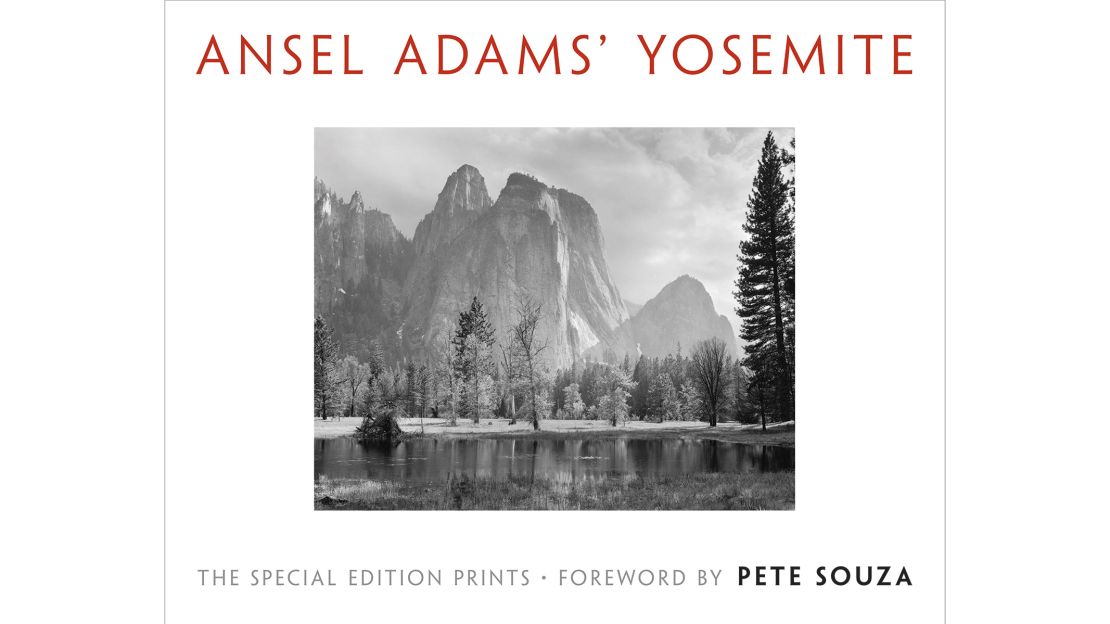
Like the landscape painters and conservationists before him, Ansel Adams’ photographs – showing Yosemite in all its glory – have been instrumental in protecting this national park.
As Yosemite marks its October anniversary of becoming a national park, Little Brown – which has published Adams’ work for more than 30 years – is releasing the book “Ansel Adams’ Yosemite: The Special Edition Prints” on October 29.
Ansel Adams’ latest book features a sequence of photographs that he selected before his death but are being published in this sequence in book form for the first time. The book includes a foreword by President Barack Obama’s chief official White House photographer, Pete Souza, and an essay by Adams’ darkroom assistant.
When asked, Matthew Adams, who has been involved in the family business most of his life, doesn’t pick favorites.
“What I’ve told people in the past is my experience and familiarity with Ansel’s work on a much broader basis has enabled me to see nuances in some photographs that other people overlook because they are looking for an icon,” he says. With some of his iconic pictures, “you need to look into them a little bit more to start to appreciate them.”
So he chose 10 photographs to share a range of Ansel Adams’ work. With some of his world-famous choices, he shares their hidden depths. Other choices are less well-known but also tell a story about Adams’ eye and technique.
‘Clearing Winter Storm’ (c. 1937)
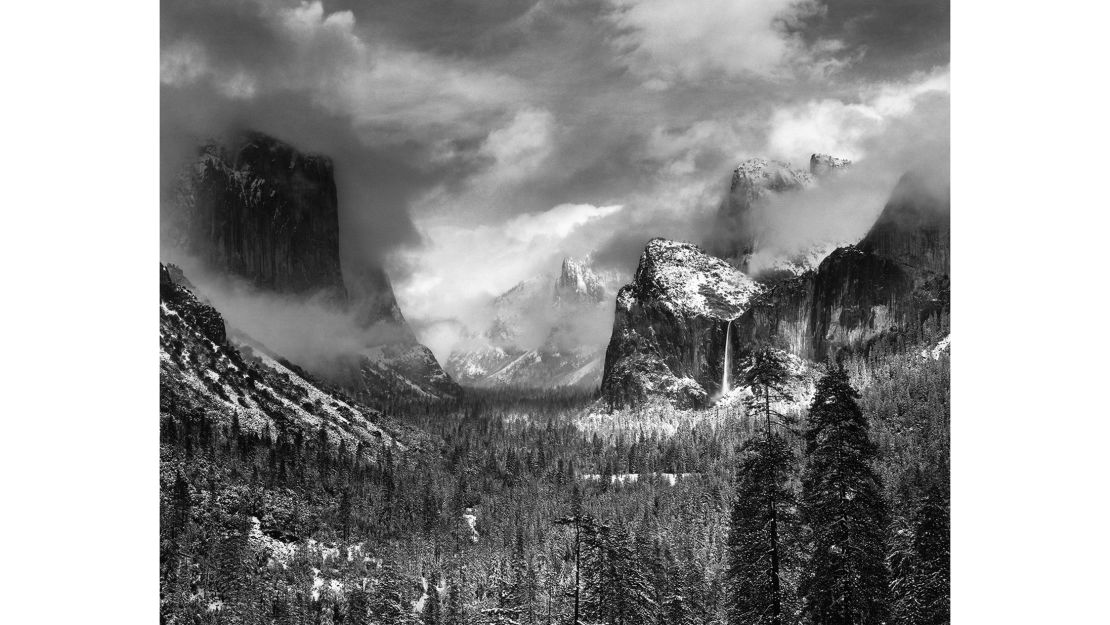
“It is one of Ansel’s masterpieces, and simply stunning,” says Matthew Adams. “There are so many nuances in the image that people inherently grasp, and I think it is as popular as it is because it speaks to something that’s more primordial, more in the core of the human than something that’s more superficial that some people will appreciate and others won’t. I don’t know anybody that will look at it and say, ‘I’m not interested.’”
‘Fir Forest in Snow, Wawona Road’ (c. 1948)
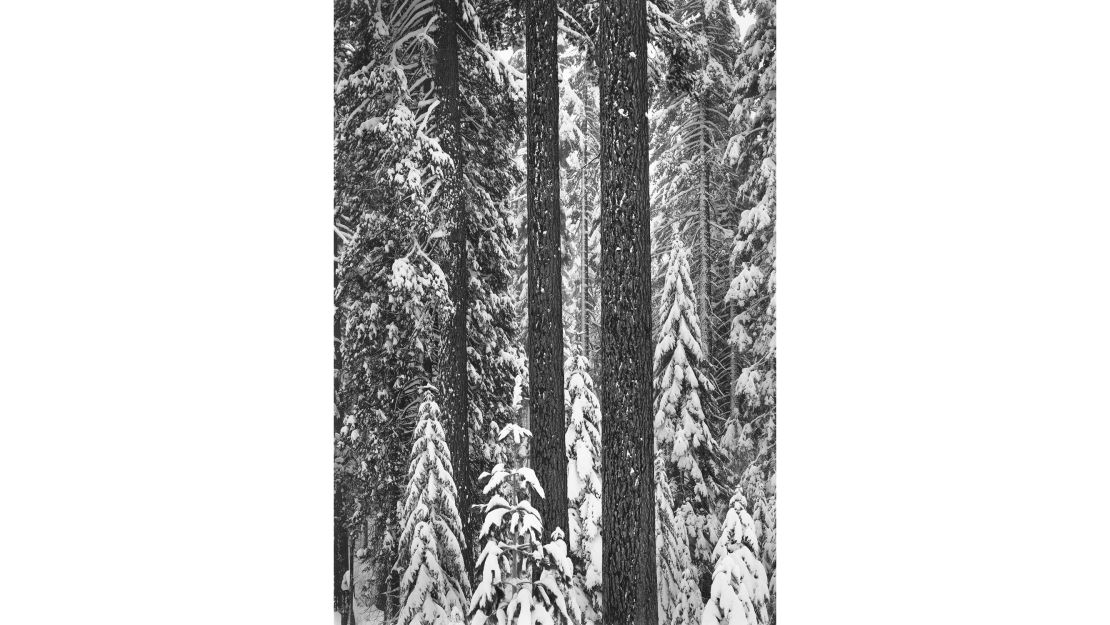
“This is a relatively unknown image, but one to me that brings to mind the serenity, stillness and quiet that one can find on a winter excursion,” Matthew Adams says. “There is a crispness of the trees in the forest, plus the tree center in the distance is not dominant, but leads the viewer into the center of that winter wonderland.”
“It also shows the quality of the printing of the book. It’s super sharp,” he says. “Ansel was always very careful about how his images were published and reproduced … A little variation can turn a picture off.”
Adams created a trust and strict guidelines on how his work could be shown and reproduced. “We in the family and the trust have been very careful to maintain those requirements as these things are produced.”
‘Lodgepole Pines, Lyell Fork of the Merced River’ (1921)
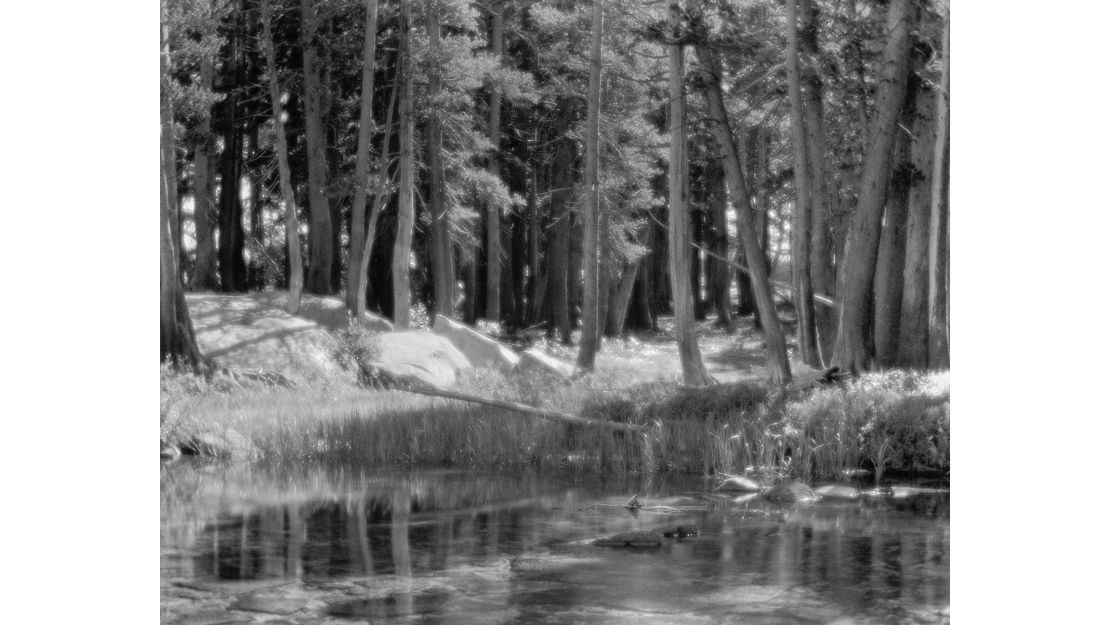
At the time Adams took this picture, in 1921, photography was not considered a fine art, says Matthew Adams. Most artistic photographers were trying to make photographs look like paintings, as Adams did at the time. “Later Ansel rebelled against the Pictorialists (as the movement was called) completely because his thought was crisp, sharp, and using the camera for what it’s designed to do.”
“It’s an interesting one, because it shows the light in the trees has this magical feeling, and it’s an interesting photograph from both a historic standpoint and an emotional perspective,” he says. “Ansel was able to create that magical feeling at age 19 in that photograph, and it exemplifies the range of what he was able to do as an artist.”
Lyell Fork is a special place, “and it takes two days to get in there by any method,” he says. “There are still places (like Lyell Fork) where you can’t get there very easily.”
‘Half Dome, Evening, From Olmsted Point’ (c. 1959)
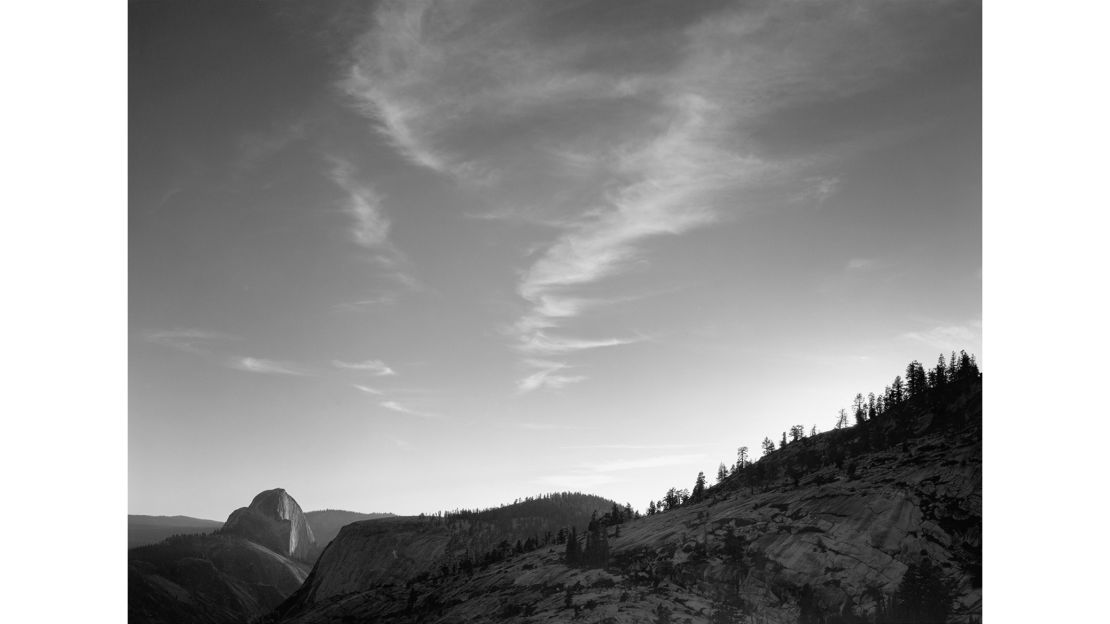
“This photograph of the last light on Half Dome is magical,” says Matthew Adams. “The high country of Yosemite and the Sierra is unlike anything else I have experienced. Most people pass through, and miss the dawn and last light. This soft light in a hard and unforgiving environment opens your eyes to the delicacy and peace of the environment.”
“It’s one that I’ve always enjoyed, and I don’t know if it’s because of the photograph itself or the experience I associate to it. (Adams) had had that experience of being up in the high country for the last light and being in awe really comes through. It’s a special, beautiful experience to be up there.”
‘Mount Ansel Adams, Lyell Fork of the Merced River’ (c. 1935)
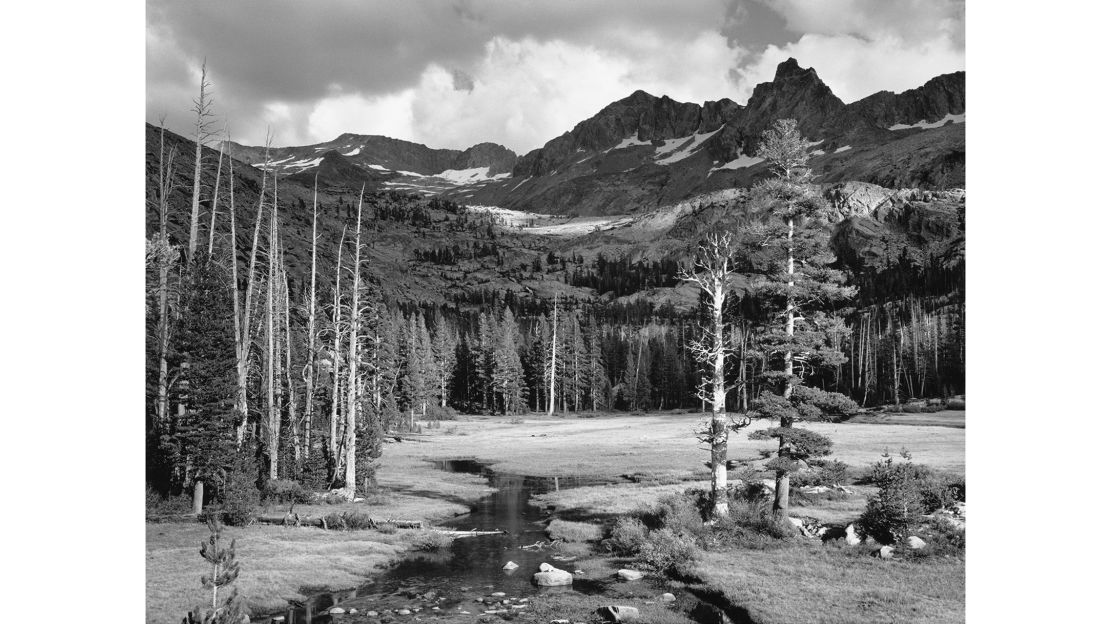
“This is maybe 100 yards from the place where he took the (Lodgepole Pines, Lyell Fork of the Merced River) photograph,” says Matthew Adams.
“My first visit to this site was a couple of years after Ansel passed. The whole valley is both serene and spectacular. From the peak of Mount Ansel Adams, you can see a chain of lakes spread below you like a necklace of sapphires.”
‘Cathedral Rocks’ (c. 1949)
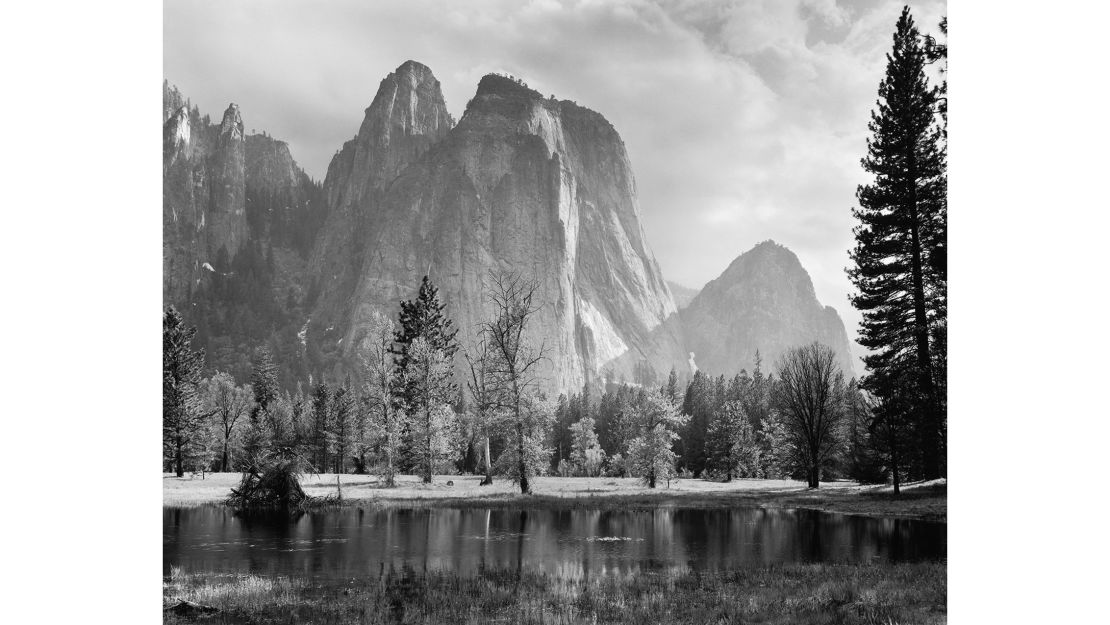
“The lower end of Yosemite Valley is dominated by El Capitan, and rightly so,” he says.
“It is a massive granite face, the largest expanse of exposed granite cliff in the world. The other side of the valley, however, has this beautiful feature of Cathedral Rocks and Spires. This dramatic springtime photograph reminds visitors to take their time and keep their eyes open all around them, as one dramatic vista can make you miss another.”
Adams didn’t print many copies of this photograph, which is typically seen as a smaller 8 inch x 10 inch image, Matthew Adams says.
When they’ve tried printing larger reproductions, the mist disappears as it gets bigger.
“It’s one of the special edition photographs as a gel and silver print, printed by Alan Ross (Adams’ assistant, who wrote a foreword to the new book),” says Matthew Adams. “It lends itself to a smaller size.”
‘Tenaya Lake, Mount Conness’ (c. 1946)
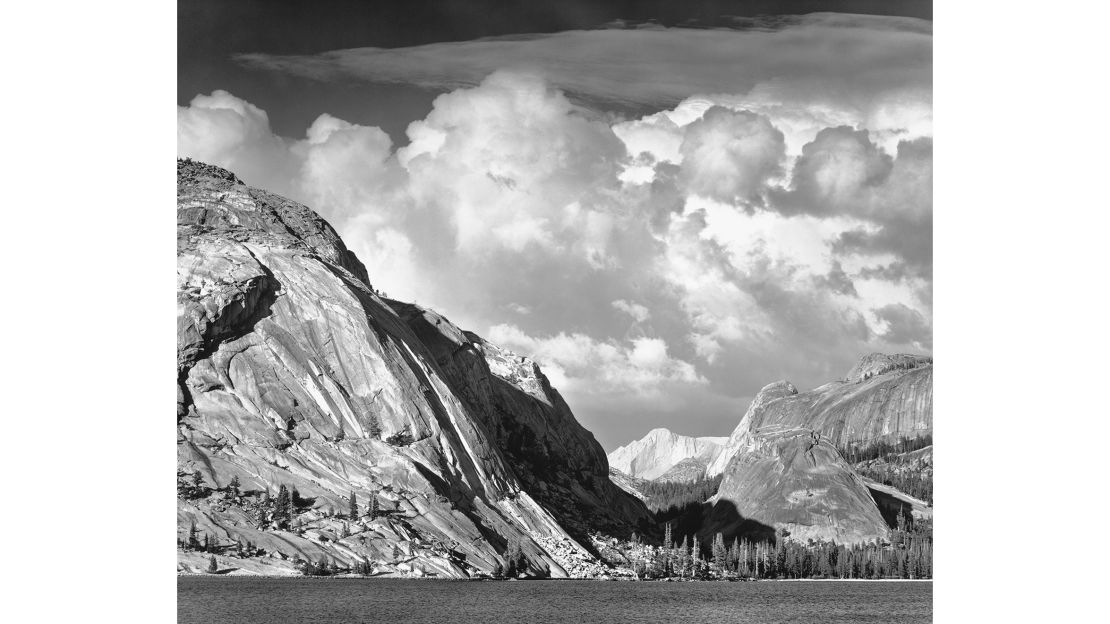
“Tenaya Lake is one of the true jewels of the Sierra Nevada,” Adams says.
“Nestled between rolling domes and steep escarpments of granite, the pristine waters invite the weary and intrepid. The first vista of the lake from the west comes at Olmstead Point, when the vibrant blue of the sky is reflected in the lake and the bright granite face of Mount Conness in the distant background shines like a beacon, guiding you to a wonderland of polished granite, lush meadows, rushing rivers, and serene lakes.
“It’s really remarkable country, and we’re really fortunate it’s preserved for us and for future generations. The people and the mentality that set it aside 100 years ago need to be commended.”
‘Half Dome, Merced River, Winter’ (c.1938)
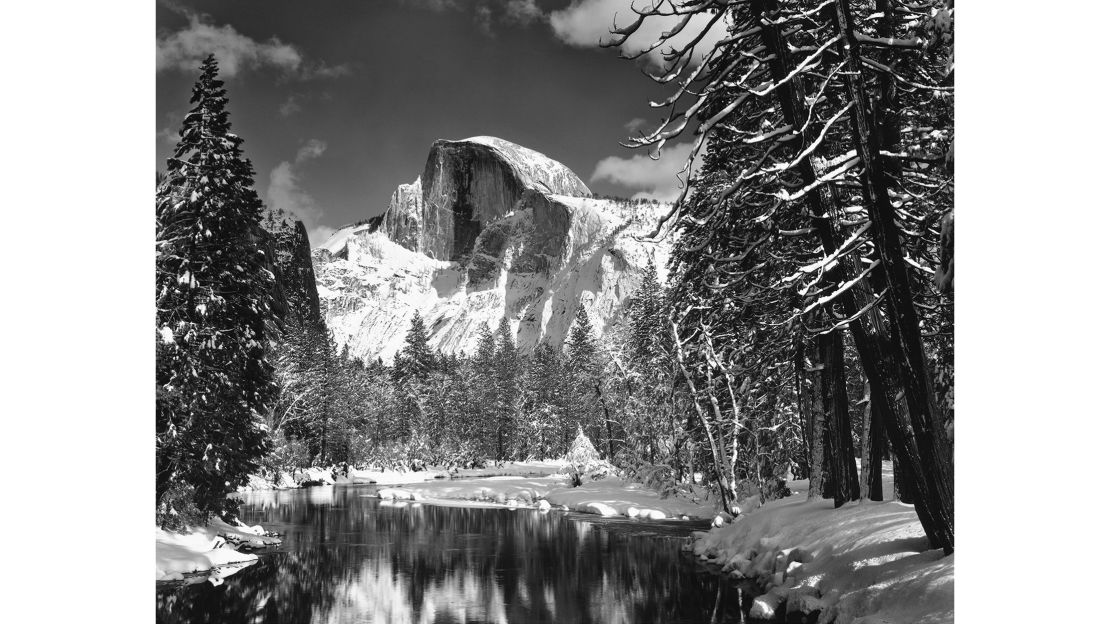
“This view is one familiar to every visitor to Yosemite Valley, from Sentinel Bridge just past the Chapel,” he says. “Just as the thousands of visitors who photograph this view now, Ansel was enamored of it from the earliest days. Interestingly, this is close to the site of the original Best’s Studio (opened by Matthew’s great-grandparents, Harry and Anne Best), before it moved to the ‘New Village’ in 1926.”
“Just about everybody who goes to Yosemite with a camera takes that picture. It makes me look every time. I will speed into the valley, but once I get to the valley I will slow down and enjoy the view.”
‘Bridalveil Fall’ (c. 1927)
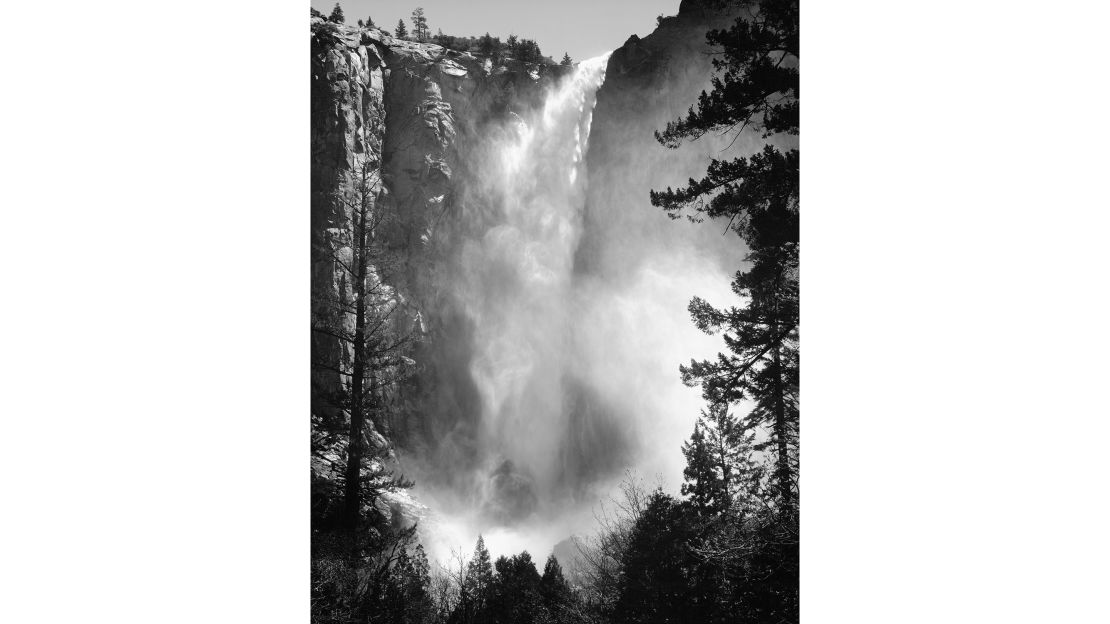
“Bridalveil Fall is a spectacular early photograph of Ansel’s, and surprisingly hard to find as an original photograph,” says Matthew Adams.
“That may be because those who own it simply don’t want to part with it. Now, and for the next two years, the Yosemite Conservancy and the National Park Service are engaged in a major project to improve the trail access and restroom facilities at Bridalveil Fall, and we are supporting the effort through a donation of 10% of our proceeds from the sale of Bridalveil Fall Modern Replica reproduction.”
“As an aside, it’s commonly dated 1927,” but Matthew Adams is doubtful of that date. “We know Ansel was horrible with negative dates. It’s one of the things he didn’t make note of. He didn’t think was that important. Nowadays it’s considered very important.”
“Ansel was doing his first portfolio then, and I think he would have included it. It’s a glass plate negative, which he stopped using in 1929. Ansel’s first portfolio included many photographs from early 1927. It just surprises me that he would not have included this one. It’s not evidence, so it’s an aside, pure speculation.”
‘Merced River, Cliffs of Cathedral Rocks, Autumn’ (c. 1939)
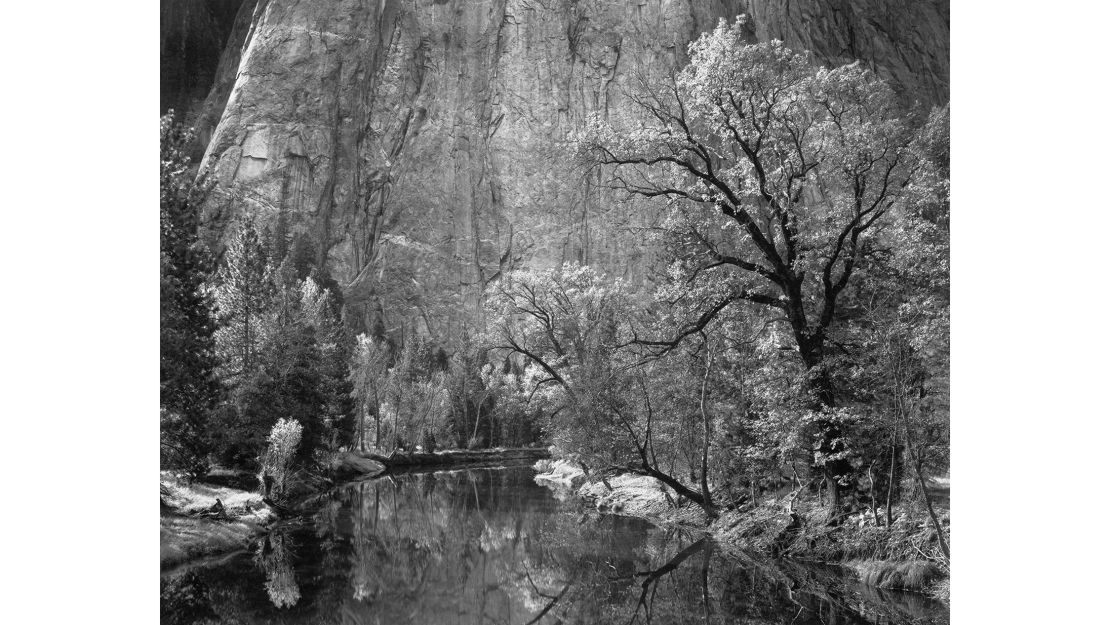
“The frontispiece of the new book is a wonderfully abstract image,” says Matthew Adams. “I think it exemplifies, in a way, the range of Ansel’s work. Far from the dramatic grand landscapes and intimate details that people typically associate with him, this image really provides a taste of Ansel’s use of the natural scene to, as he would put it, ‘extract’ a feeling. Ansel printed this image very differently over the years. Each version has its own distinctive mood.”
“Ansel made a portfolio of Yosemite Valley in 1960, and this image was included in that portfolio.”
It’s not the only way this photograph has been seen. “Ansel printed it in at least three distinct manners. Some photos are brighter and create a different feel. This one is a little bit more moody. They’re all wonderful. It’s interesting because different people gravitate to different images.”
‘Moon and Half Dome’ (c. 1960)
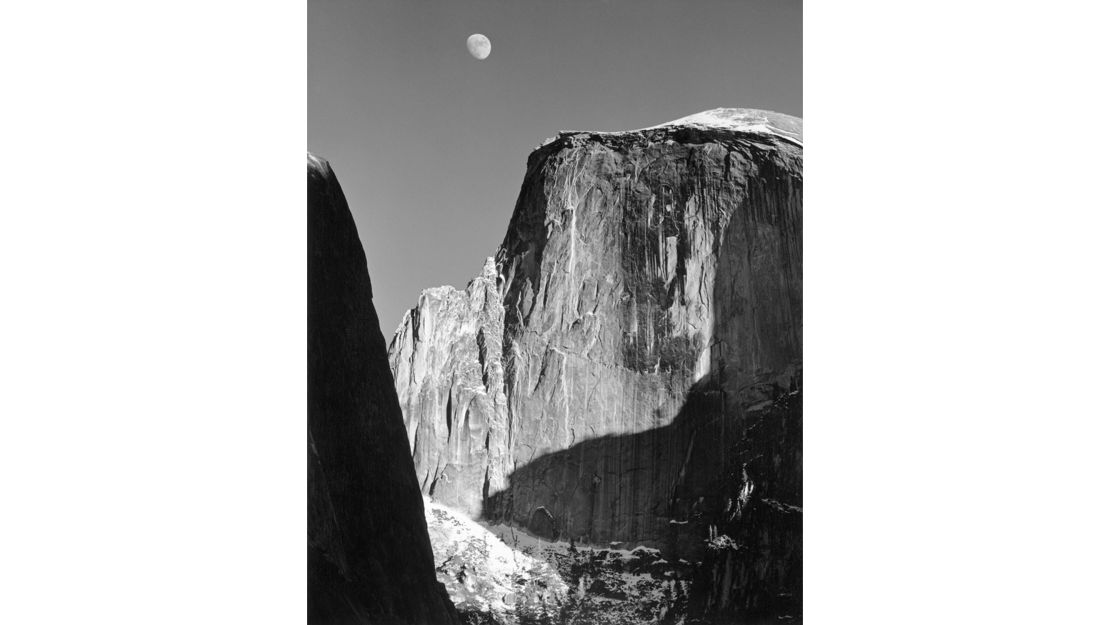
“In many people’s minds, when you say ‘Yosemite National Park,’ they think ‘Moon and Half Dome.’ It has entered the collective consciousness. The portrait focuses tightly on Half Dome, the cliff to the left is present only as a boundary, and the moon provides both scale and an otherworldly symbol of wild and unknown. It is both familiar and majestic, and is easily one of Ansel’s most known and recognized photographs.”
‘Sequoia Roots’ (c. 1950)
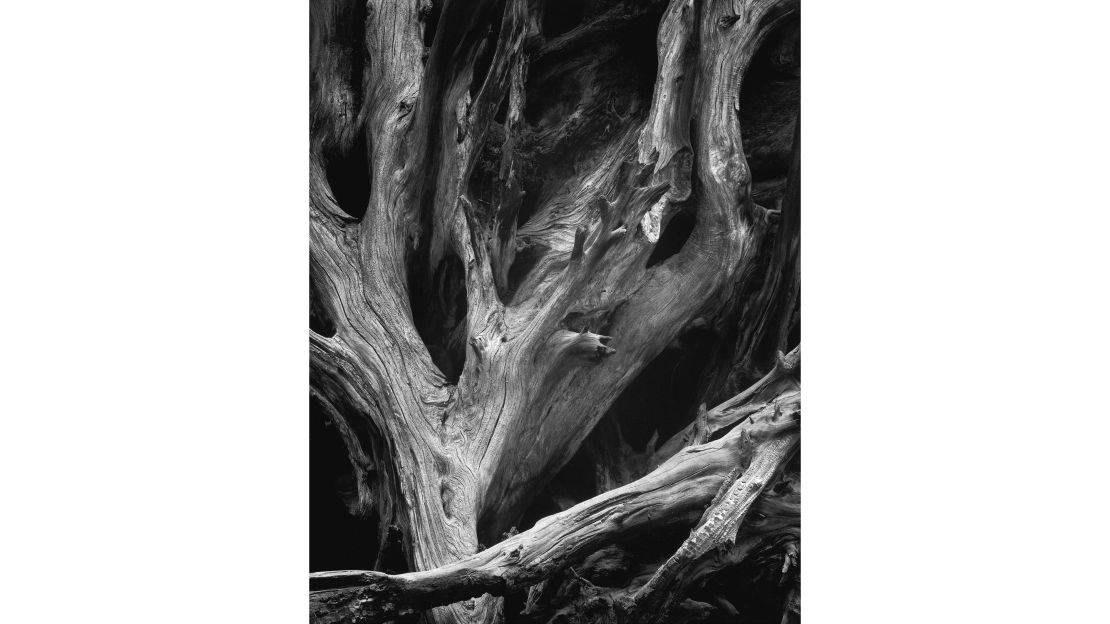
“This is a fantastic image on many levels. By itself, it is a beautiful photograph of a beautiful object, an abstract composition of a familiar subject. I also enjoy it for the lack of scale. It’s hard to imagine, but the visible frame is approximately 6 feet by 4 feet. The Giant Sequoias are massive, and a remarkable testament to the diversity of nature.”













